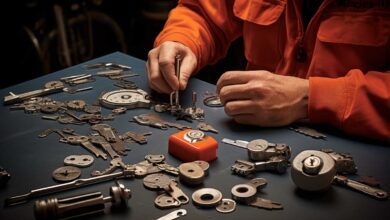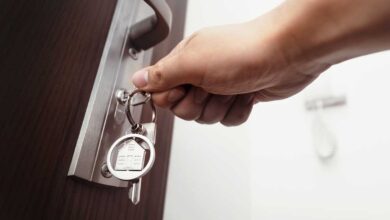How To Maintain Your Smart Lock For Longevity
KEY TAKEAWAYS
Smart locks have revolutionized the way we secure our homes and businesses. They offer a blend of convenience and security that traditional locks can’t match. But like all technology, they require proper care to ensure they last and function optimally. So, how to maintain your smart lock for longevity.
This article delves deep into the benefits of having a smart lock and provides a comprehensive guide on maintaining it for longevity.
Benefits Of Having A Smart Lock
Smart locks aren’t just a fancy gadget; they come with a plethora of benefits that make them a worthy investment:
-
Enhanced Security: Smart locks often come with advanced encryption methods, making them harder to tamper with compared to traditional locks.
-
Convenience: Say goodbye to the hassle of lost keys. With smart locks, you can grant or deny access remotely, often through a smartphone app.
-
Access Logs: Many smart locks keep a record of who enters and exits, providing an added layer of security and peace of mind.
-
Integration With Other Smart Devices: Smart locks can often be integrated with other smart home devices, enhancing the overall smart home experience.
Understanding Your Lock’s Needs
To ensure the longevity of your smart lock, it’s crucial to understand its specific needs and requirements.
Regular Maintenance
Just like any other device, smart locks require regular maintenance:
-
Cleaning: Dust and debris can accumulate in the lock mechanism. Gently clean the exterior with a soft cloth and use compressed air to blow out any debris from the interior.
-
Software Updates: Manufacturers often release software updates to fix bugs or enhance security. Ensure your lock’s software is always up-to-date.
-
Physical Inspection: Periodically inspect the lock for any signs of wear or damage. Address any issues promptly to prevent further complications.
Battery Life
The battery is the lifeblood of your smart lock:
-
Regular Checks: Monitor the battery level regularly. Most smart locks will notify you when the battery is low, but it’s a good practice to check manually from time to time.
-
Use Quality Batteries: Invest in high-quality batteries. They might be a bit pricier, but they last longer and provide consistent performance.
-
Backup Power: Consider having a backup power source. Some smart locks come with a backup USB power input in case the batteries die.
Protective Coating
Protecting your smart lock from the elements can significantly increase its lifespan:
-
Weatherproofing: If your smart lock is exposed to the elements, consider adding a protective cover or sealant. This will shield it from rain, snow, and extreme temperatures.
-
Anti-Tamper Sealants: There are sealants available that can make your lock more resistant to tampering. This not only adds an extra layer of security but also ensures the lock remains in good condition.
Quality Lock
When investing in a smart lock, it’s paramount to prioritize quality. A high-quality smart lock will not only offer enhanced security features but will also be more durable and reliable over time. Here’s what to consider:
-
Material Strength: Opt for locks made of robust materials like hardened steel or solid brass, which can withstand physical attacks and resist wear and tear.
-
Encryption Standards: A quality smart lock should employ advanced encryption standards, ensuring that the communication between the lock and its control device is secure and cannot be easily intercepted.
-
Reputable Brands: Brands with a proven track record in the smart lock industry often invest more in research and development, ensuring their products are top-notch in terms of both security and durability.
Proper Care
Maintaining the longevity of your smart lock goes beyond its initial quality; it requires consistent care:
-
Regular Cleaning: Over time, dirt and grime can accumulate on the lock, affecting its functionality. Use a soft cloth to wipe down the exterior and ensure the keyhole or touchpad remains clean and unobstructed.
-
Avoid Force: While it might seem obvious, avoid using excessive force when operating the lock. This can lead to premature wear or even damage.
-
Environmental Protection: If your lock is exposed to harsh weather conditions, consider using protective covers or weatherproofing sealants to shield it from potential damage.
Optimal Performance
To get the most out of your smart lock, it’s essential to ensure it’s always performing at its best:
-
Software Updates: Regularly update the lock’s software. Manufacturers often release updates to enhance security features, fix bugs, or improve overall performance.
-
Battery Maintenance: Ensure the batteries are replaced promptly when they run low. Using the lock with low batteries can sometimes affect its performance or responsiveness.
-
Regular Testing: Periodically test all the features of your smart lock, from remote access to auto-locking, to ensure everything is working seamlessly. If you notice any lag or malfunction, consult the manufacturer or a professional.
Cleaning And Maintaining Your Smart Lock
Ensuring that your smart lock remains clean and well-maintained is pivotal to its longevity and optimal performance. Over time, environmental factors, daily use, and even the occasional mishap can lead to the accumulation of dirt, grime, and residues on your smart lock. Proper cleaning and maintenance can prevent these factors from affecting the functionality and appearance of your lock. Here’s a guide on what to use and what to avoid when cleaning your smart lock.
Cleaning Products To Avoid
When cleaning your smart lock, it’s essential to be aware of products that can cause harm:
-
Abrasive Cleaners: Products that contain gritty particles can scratch the surface of your smart lock, leading to aesthetic and functional damage over time.
-
Harsh Chemicals: Avoid using bleach, ammonia, or other strong chemicals. These can corrode the metal components of the lock and damage any electronic parts.
-
Oil-Based Products: These can leave a residue on the lock, attracting more dirt and grime. Over time, this can interfere with the lock’s mechanism.
-
Aerosol Sprays: Directly spraying aerosol-based cleaners can introduce moisture into the lock’s internal components, potentially causing damage or malfunction.
Recommended Cleaning Products And Tools
To ensure the safety and longevity of your smart lock, it’s best to use the following products and tools:
-
Mild Soap Solution: A mixture of mild dish soap and water is gentle yet effective for cleaning the exterior of most smart locks. Ensure you wring out excess water from the cloth before wiping.
-
Microfiber Cloth: This soft cloth is perfect for cleaning without scratching or leaving lint behind. It can effectively remove fingerprints, smudges, and light grime.
-
Compressed Air: For the lock’s keyhole or any intricate parts, use compressed air to blow out dust and debris gently. This ensures the internal mechanisms remain clean without introducing moisture.
-
Isopropyl Alcohol: For disinfecting or removing stubborn residues, a solution of isopropyl alcohol can be effective. However, use it sparingly and ensure it doesn’t seep into the lock’s internals.
-
Soft Brushes: These can be used to gently brush away any accumulated dirt or debris from the lock’s surface and crevices.
Frequently Asked Questions
We have addressed some of the most commonly asked queries to provide you with a better understanding of how to maintain your smart lock for longevity.
Can I use regular household cleaners on my smart lock?
While it might be tempting to use everyday household cleaners, it’s essential to exercise caution. Many of these cleaners contain harsh chemicals or abrasives that can damage the lock’s surface or its internal components. Instead, opt for milder solutions like a diluted soap mixture or isopropyl alcohol for more stubborn residues.
How often should I clean my smart lock?
The frequency of cleaning largely depends on the lock’s exposure to external elements and its usage. However, as a general guideline, cleaning the exterior once a month to remove fingerprints and grime is advisable. For the internals, a more thorough check every 3-6 months should suffice to ensure optimal performance.
Is moisture harmful to smart locks?
Absolutely. Moisture is a primary enemy of electronic components, which are integral to smart locks. Prolonged exposure to moisture can lead to malfunctions or total failure of the lock. When cleaning, always ensure that cloths are well-wrung, and avoid allowing water or any liquid to seep into the lock’s internals.
Can I use lubricants inside the lock mechanism?
Lubricating the internal mechanisms of a smart lock can be beneficial, but it’s crucial to use the right product. Always refer to the manufacturer’s guidelines. Some smart locks may require specific lubricants, while others might get clogged or malfunction with the wrong type.
What should I do if my smart lock malfunctions after cleaning?
If your smart lock isn’t functioning correctly post-cleaning, first ensure it’s completely dry by using compressed air. If the problem persists, reset the lock according to the manufacturer’s instructions. Should the issue remain unresolved, it’s best to consult with the manufacturer or seek professional assistance.
Are there professional services for cleaning smart locks?
Yes, there are. Many locksmiths and security companies offer specialized maintenance services tailored for smart locks. These professionals have the expertise and tools to ensure that your smart lock remains in peak condition, extending its lifespan and maintaining its efficiency.
Maintaining Your Smart Locks For Longevity
Knowing how to maintain your smart lock for longevity is paramount to its durability and efficient functioning. With the right cleaning products and a regular maintenance schedule, you can ensure the security and convenience of your smart lock for many years. Remember, the key to a long-lasting smart lock isn’t just its initial quality but the consistent care you provide.
Discover more about how to keep your house and family safe by reading our in-depth guide to the recent trends in smart home and office security. For additional information, visit Security Forward and explore our resources and guides.





